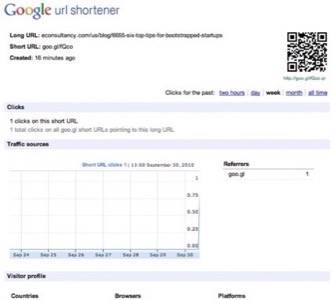Google’s URL shortener Goo.gl has launched its open service and companion website to the public this afternoon. The service looks a whole lot like upstart innovator Bit.ly.

“I guess Oscar Wilde was right, imitation is the most sincere form of flattery,” Bit.ly’s John Borthwick told us in response. “They took all the basic features and copied from bit.ly.” That is true for the user interface, but in the larger context of both companies’ offerings, there are significant differences.

Additional features Goo.gl offers include browser and OS level breakdown of link clickers and an auto-generated QR code for every link shortened. Google’s service does not offer a public API yet, but the company says it will in the future. Bit.ly offers a reporting API, and perhaps most importantly it offers publishers their own branding. Borthwick says there are now 4,000 white-label deals in place with Bit.ly. This site publishes through the URL RWW.to, for example, which looks better than publishing through a Google URL.
Many startups have built URL shorteners in recent years. The most interesting have been focused on analyzing the content on shortened links and offering the resulting data programmatically.
That’s what’s most interesting to developers, at least. For users, the people who put the data into the system, a trusted brand and now a small number of letters are the only things that matter. People put up with frequently unresponsive TinyURL.com for years. Use of that service will likely plummet now that there is a Google option, and other small services must be feeling threatened as well.
Imagine Goo.gl data integrated with Google Analytics. That would be a powerful combination.
One independent study by Web-monitoring company WatchMouse this spring confirmed Goo.gl’s claims that it is the fastest and most robust URL shortener on the market.
Imagine Goo.gl data integrated with Google Analytics. That would be a powerful combination. Goo.gl is already integrated in the publishing flow from Google’s RSS and advertising platform FeedBurner to Twitter. In theory that could prove uniquely compelling as well.





















